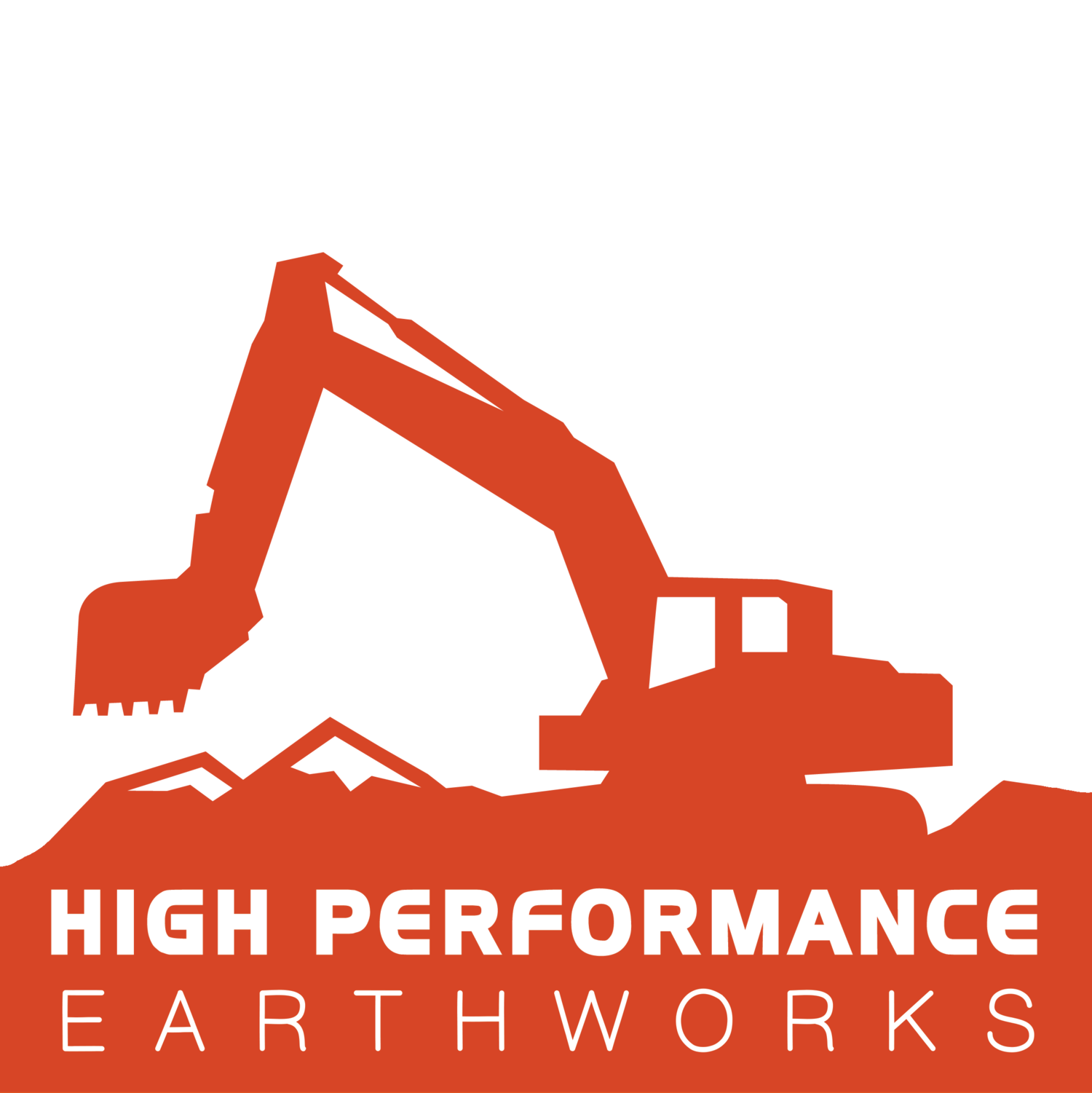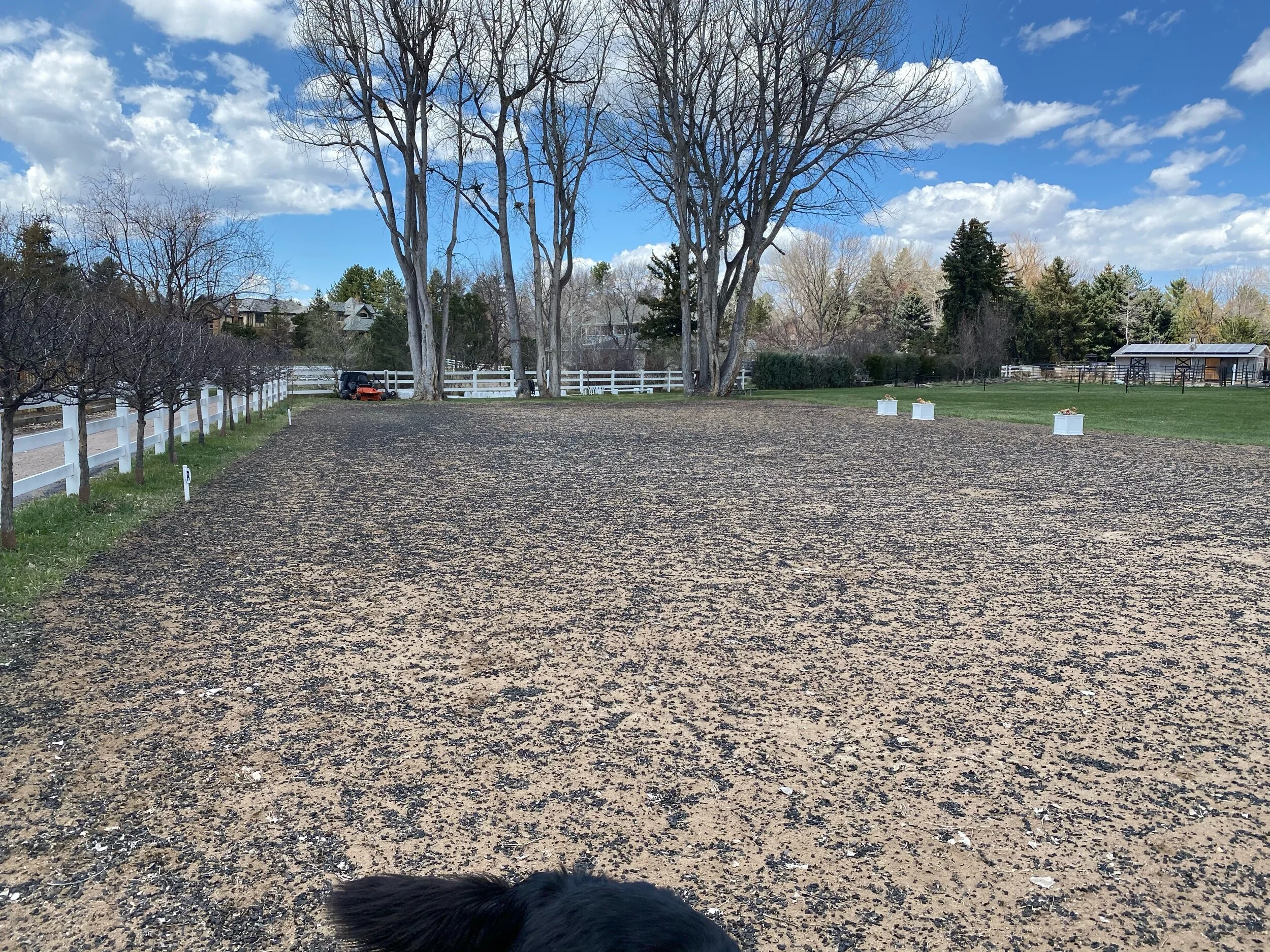• 0:12 - 0:24 All right. I'm down here at 17 random road with Susie. How Holly and looking at this horse Arena given a quick overview of what we're doing. • 0:26 - 0:51 So the big picture A high-level concept is that we're going to take out all of this existing footing down 7 inches down to our original native soil. Then we will build it back up with good just on these two sides, okay. • 0:52 - 1:12 Oh and this is just two and a half inches. Okay good and then however over here on the sides we're going to expand into the grass for feet estimated and down 7 inches and then we will build back up with our new material. So if we're just taking down this 2 inches.
• 1:15 - 1:37 And then we're just going to come back in with our new imported footing and so really only spots where we were actually going to be building up with our lasagna is over there along those clothes for feet and then two feet here. Okay, six six I got you. • 1:37 - 1:52 And the six feet in on the long side to get rid of the soft spots. Okay, so four feet out in six feet in that will all get taken down 7 inches. Okay, interesting. Alright, so yeah that simplifies it all a little bit. •
1:57 - 2:26 Yeah, and so then the idea is will build up with me rifai fabric at the base and then we'll do 2 inches of crushed rock for four inches of crushed rock. And then another layer of me rifai Fabric and then two inches of Crusher finds three three inches of Crusher finds everything will get compacted and then defines over everything including that two inches across refines over everything. • 2:26 - 2:37 Including the expanded area and then our new imported footing that has wax-coated. We'll all get graded out at one and a half percent slope from that corner in the far. • 2:39 - 2:41 Corner down to right here where we're standing.
• 2:42 - 3:11 And then a little bit of edging along here and along there and around the whole thing, correct? And then I would like to put a drain pipe in from this corner at the bottom of our excavation out into this this Creek right here so that any water that does saturate down through and may flow across the line This Way can have a way to get out and then so will be. • 3:12 - 3:33 Reading all of this material and over there and this is our access for the dump trucks. We will take out that little portion of fence there. Let the trucks back in keep them up high and away from the creek back into over here and all these flower pots will be out of the way.
• 3:34 - 4:03 And we'll scrape up all of this footing down two inches and then we'll also take out our material out here along the edges and then this footing is going to a different home than are exported grass and topsoil which will have to find a home for 10 feet. Right 6 and 4. Mmm and a total of eight feet. So 6 into 6 & 2 & 6 & 4, okay. • 4:04 - 4:08 Up and down 7 inches is what we're going to estimate. Yeah. • 4:12 - 4:41 So right through here, we do anticipate that the grass will be damaged by the trucks and we will need to do a little bit of restoration of the grass right here. And what we'll need to do there is in some manner. I'm not sure yet the best approach best technique for aerating the soil after gets compacted with motor vehicle traffic, but we will want to rake and scarify that soil after it gets compacted and driven over.
• 4:42 - 5:08 And then put down new sod over these tracks where or seed I mean that would be kind of up to you and but some restoration work will need to be considered in that area and then putting the fence back and the fence may need to have those concrete those posts set in concrete and re re-establish their. • 5:09 - 5:13 So that could be some some concrete work and a little bit of extra work that. • 5:14 - 5:15 Is. • 5:17 - 5:17 Part of the job. • 5:19 - 5:30 And then also the new footing is going to be coming on pallets. And so we will need to offload those most likely in the street with our loader and forks.
• 5:35 - 5:49 And then brought in here and distributed throughout the arena and grated with our grading attachment that will be using from Bobcat of the Rockies. It's laser-guided grading attachment for the skid steer. • 5:51 - 6:18 Yeah, and we will be adding the roller compactor and we'll get a roller with that has its own water on board and we'll be filling up the water here on the property from the domestic water supply and working that into our compaction for moisture conditioning of our material. And then the other one other thing that I wanted to mention is that if we end up with a deep topsoil.
• 6:20 - 6:39 You know presence here on the side where the grass is then we've discussed with Susie the idea of removing that topsoil until we get down to suitable bearing soil before building up with our with our nude lasagna of our material Imports. • 6:40 - 6:41 And. • 6:43 - 7:13 So Susie, it would also like to have this all graded down about 5 inches or so, maybe maybe a little more maybe six and removed and levelled and then we would bring in inch and a half crushed rock level it great it compact it and then we put down Crusher finds. I don't know what you want to have a layer of fabric in between.
• 7:13 - 7:42 In just put down the crusher finds over the crushed rock level grade that compact it and then Susie will go ahead and put the her pavers in by herself. Well, just get her the the subgrade prepared so she can do that work happily and all of this material will need to be removed. This is probably about a dump truck. Yeah, 600 square root of 40 square feet or 620. • 7:43 - 7:51 6:24 I can do the math. So it's six 24 divided by 1/2 would be 6 3.
• 7:53 - 8:21 312 312 divided by 27 do some weird number but doesn't tell us the number of yards. So we'll need to take this slab out as well. And we will need to most likely bring down an excavator mini excavator for this to scratch this out and get these out of here and loaded but maybe not we might be able to do this entire job with just a loader. Yeah. • 8:22 - 8:24 So something to consider.

